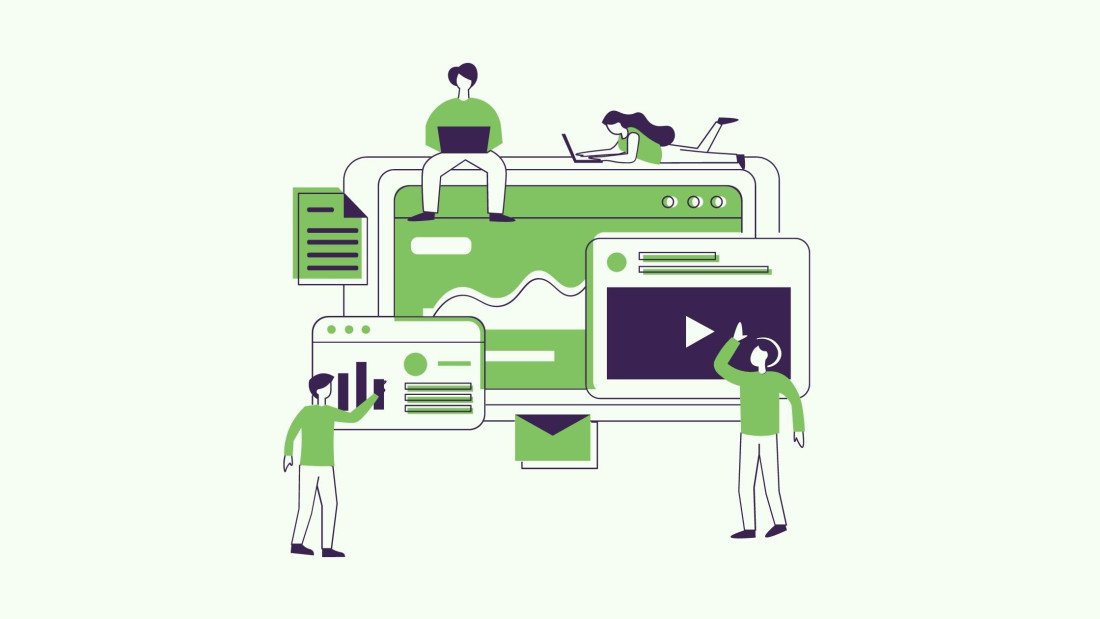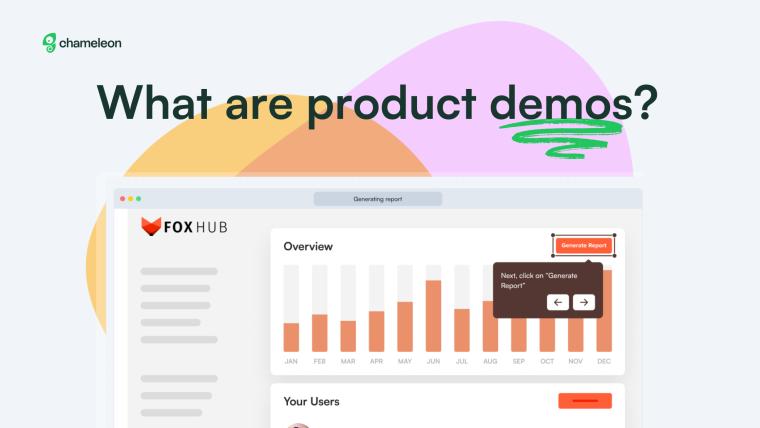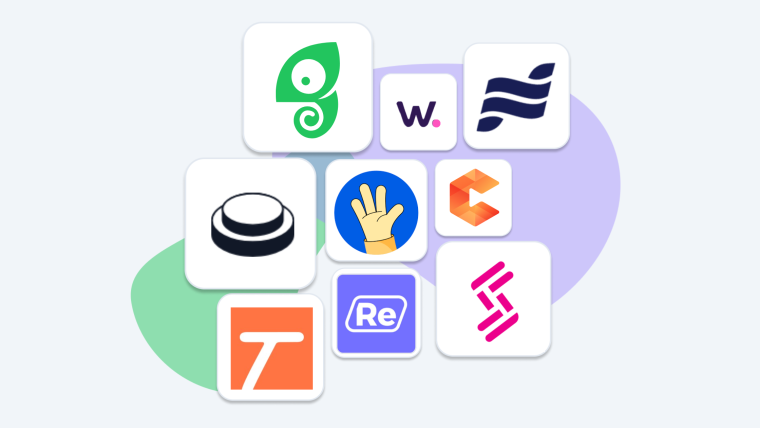Welcome, welcome, gather ‘round. We’re diving into the depths of SaaS marketing. It’s a glorious place to be.
In this SaaS marketing playbook, we’ll share expert opinions on how to effectively market your SaaS, key metrics worth tracking, and actionable steps for pre-launch and post-launch product marketing campaigns.
No fluff, just SaaS stuff. Let’s get into it.
Don’t get lost in the thick of marketing strategies out there. We spoke to SaaS product marketers and narrowed it down to the best-performing channels specifically for SaaS—from email and content to in-product marketing and sales enablement.
We’ll cover 10+ SaaS marketing metrics worth tracking, and explain how each can contribute to your marketing goals.
Preparing for a product launch? We’ve got you covered. With pre-launch and post-launch checklists, you’ll never miss an important step in your campaigns.
Accumulate all your data points, learnings, and product tweaks to re-work your go-to-market strategy so that it’s more effective than ever before.
And, of course, don’t be shy about sharing your data with other teams in your SaaS. Product, customer success, finance, and sales teams will all massively benefit from your learnings.
What is SaaS marketing?
SaaS marketing is building awareness and generating demand for your brand and product. SaaS marketing ensures you’re filling your pipeline with red hot chili pepper-like leads.
SaaS marketing uses an accumulation of communication channels to find, talk to, and attract potential users. These channels can be anything from social media, podcasts, and emails to webinars and in-app notifications.
The goal of B2B SaaS marketing is to get more qualified leads for your product, increase customer lifetime value (CLTV), and—ultimately—drive more revenue.
How to effectively market your B2B SaaS?
Don’t get lost in the thick of go-to-market strategies out there. We spoke to SaaS product marketers in practice and narrowed it down to the best-performing channels specifically for SaaS.
Let’s take a closer look at each of the channels and specific strategies you can implement.
Email marketing
A stat you’ve probably seen doing the rounds is that email marketing can generate $42 for every $1 spent—a whopping 4,200% ROI. A stat you are perhaps not so familiar with is that four out of five marketers say they’d rather drop social media marketing than email.
It’s a powerful channel, especially for SaaS, and can do wonders for your lead nurturing flows, onboarding new users, and keeping long-standing users happy.
A few specific strategies within the email to consider are:
Newsletters
Nurture flows
Onboarding flows
Product updates a
Pre-launch and post-launch email campaigns
As Ryan Stewart, Managing Partner at The Blueprint Training, explains, email marketing can be a useful channel for lead generation and getting more website traffic.
“I use email marketing as another way to generate leads through conversion optimization. I make sure the copy on my landing page is written in such a way that it gets people interested enough in learning more about what my company does.”
– Ryan Stewart, Managing Partner at The Blueprint Training
Content marketing
Content marketing is a whole world of potential; ready and waiting for you. Despite it being a massively over-saturated go-to-market strategy, people can’t get enough of it and you’ll always have new opportunities—if you play your strategy right and work on content marketing optimization.
Ameet Mehta, Founder of SyndicationPro, considers content marketing to be “one of the best ways to build trust and engagement with your potential customers; it helps build your brand name and credibility”.
At SyndicationPro we create specific content that furthers messaging and drives conversions. This content bank includes blog posts, videos, and ebooks explaining product benefits or providing tips for using them.”
– Ameet Mehta, Founder of SyndicationPro
Done well, a SaaS marketing strategy focusing on quality content, localized content marketing, and various content pieces relevant to your audience can help you drive brand awareness, build authority, find and educate new users, win more click-throughs to your website, and increase product engagement.
If you need any more convincing that content marketing should be top of your list, consider that close to 90% of B2B marketers prioritize their audience’s informational needs over sales messaging, and 96% work with a content marketing strategy.
So, what does SaaS content marketing look like for B2B brands?
Let’s take a closer look:
SEO: On-page and off-page SaaS SEO strategies are often top of the list. They give your business a better chance of falling in front of the right pair of eyes, without needing to invest thousands in ads. In fact, close to 80% of B2B brands implement search engine optimization tactics in their content creation.
Social media: Despite B2B marketers saying they’d give up social media over email marketing, it’s still not a channel to be underestimated. LinkedIn still reigns the social roost for B2B brands—currently in use by 96% of B2B SaaS marketers. However, figure out where your audience is, and go all-in on that channel. Psst… product marketing videos are still a fab resource for all social channels!
Podcasts: This content type has been on the rise globally since 2018, and predictions are showing no sign of its adoption rate slowing down. Podcasts give you uninterrupted time with your listeners, allow you to get in front of new audiences, and for your brand to align with those thought leaders you want to align with.
For example, Jane Portman, Co-Founder of Userlist, hosts two podcasts: UI Breakfast and Better Done Than Perfect. Both of these podcasts allow Jane (and Userlist) to build a community of product-led people, get in front of the right audience, and elevate brand positioning.
Product positioning
Talking of brand positioning, product positioning is also a great branch of your content strategy to consider.
This will include key positioning statements such as value proposition, all your marketing campaign messages, in-app messages, and much more. Make sure that your messaging is aligned with your product vision, and keep it clear and relatable for your target audience.
There are a lot of ways you can position your product better out there. Let’s take a look at a few:
Third-party review sites: Platforms like G2, Capterra, TrustPilot, GetApp, and TrustRadius are all the places to be and should be a core element of every SaaS marketing playbook.
Why? The company profiles on these platforms are high-intent pages. If someone is checking out your SaaS there, they’re scoping you out, looking for reviews, and want to see how you stand against the competition.
Ensure your product positioning is spot-on on each of these profiles and that your information is up-to-date; truly reflecting your SaaS. What’s more, if you’re running an NPS survey, then reach out to those Promoters and ask them to leave a review on these platforms.
If you’re an early-stage SaaS startup, then it’s a good shout to get your SaaS product on Product Hunt and start building the visibility and awareness to help you position the product you want to put out into the market. Being among popular upcoming products featured on Product Hunt is a great way to have more people discover your product.
In-product marketing
“All rise!” The in-product channel is entering the room.
Upselling and cross-selling have never been easier than when it’s inside your product, communicating with users while they interact with it. It’s also one of the core elements of your product marketing strategy.
Here, you have your user’s attention. You know they’re already involved in what you offer, and they’re typically fewer clicks away from trying out new features, discovering more value in your product, and upgrading their subscription plan.
💡 This is where Chameleon comes in, and it comes in shining. There’s so much you can do with product marketing, and your SaaS marketing playbook needs to reflect this. With Chameleon, you can use in-app messages to announce new features with Tooltips, walk users through the onboarding with Tours, ask for their feedback with Microsurveys, or help them complete get-started tasks with Launchers.

An example of a get-started checklist built with a Chameleon Launcher
Sales enablement
Your SaaS marketing team will be responsible for enabling your sales team. Whether this is sales scripts, PDFs, plain-text emails, or something else. Your SaaS marketing team has the best overview of the product and market to develop communication strategies that deliver exactly what prospects need.
Your B2B SaaS marketing team will also have the best overview of the entire customer lifecycle; to the point of sale—and beyond. Therefore, they’re in a unique position to be able to create sales process content they know won’t have passed someone’s screens up until that moment, and will not come across in their future product experience. No one likes repeat content!
SaaS marketing metrics to track
Okay, pushing marketing strategies to the side, for now, let’s look at those key marketing metrics you can keep tabs on to ensure your strategies are doing what they’re supposed to.
MQLs: Marketing Qualified Leads are those new leads that have been in contact with your marketing materials and campaigns through various campaigns and touchpoints with your SaaS.
SQLs: Sales Qualified Leads are prospects ready to speak directly to your sales team and start figuring out the best pricing plan for their business. They have a high potential of becoming your customers.
PQLs: Product Qualified Leads are existing users of your product who are identified as ready to transition from free-to-paid plans or expand their current usage through cross-selling and upselling opportunities.
CLTV: Customer Lifetime Value is the amount of financial value customers typically bring your business. It’s an average of monthly subscriptions, payment plans, and retention rates.
Retention rate: This metric shows how long customers typically remain users of your product.
CAC: Customer Acquisition Cost lets you know how much it’s costing your business to acquire a new customer. It’s an accumulated average across all channels. Of course, you want it to be low enough to still warrant a healthy ROI.
ACV: Average Contract Value shows how much each contract is worth, on average.
Conversion rates: This metric shows the percentage of people who are converting from one stage in the sales funnel to the next.
CTR: Click-Through Rates can and should be tracked across various marketing and advertising initiatives including emails, PPC campaigns, and more.
CSAT: Customer Satisfaction score ensures you’re keeping your users happy, fulfilled, and sticking around. There are a few ways you can measure customer satisfaction.
Open rates: For email, this metric does what it says on the tin—on average, how many people are opening your emails.
The metrics you’ll track and focus on will depend on your business, product, and marketing goals. You could also have a more specific one that you want to use as a North Star metric, as Text Request does.
“Our top metric is qualified sales conversations. We ignore most of the funnel. Focusing on interest > marketing qualified leads > sales qualified leads has not been worth the time or money. We make it easy for people interested in buying to either sign-up or talk to us, and pushing prospects towards that instead of a lead capture has been more profitable.”
– Kenneth Burke, VP of Marketing at Text Request
Keep in mind that each of the metrics not only needs to be tracked, but you should aim to be optimizing them wherever possible. Segment your users and leads, and then split test the hypothesis. Gather data, figure out what’s working best, and know that everything can always be better.
Now, let’s move on to the next chapter of your SaaS marketing playbook—preparing for the launch of a new product or a feature.
Want new product marketing content, weekly?
Sign up to our mailing list to get exclusive insights and reads from the product world
Pre-launch SaaS marketing checklist
So your new product or feature is launching soon, and you’ve got a lot to do to prepare for it. Don’t worry, we’ve got you covered.
✓ Align your user personas and their journeys
✓ Build a launch-specific landing page
✓ Figure out your onboarding flows
✓ Link your blog content to the landing page
✓ Flesh out a pre-launch email journey
Align your personas and their journeys
First up, make sure your user persona profiles are up-to-date. These should be fluid documents regardless, but more so than ever should be at their freshest for your product pre-launch.
Figure out where your personas are, the channels they’re on, the industry-specific language they use, and the problems and needs they have. Move forward with your pre-launch strategy with all of this information at the top of your mind.
Here’s a valuable piece of advice from Ameet Mehta.
“You need to build up a community around the product that is excited about its release. Communicating with this group of early adopters will help them trust and rely on you after the product launches. You can also use this group as a test group for identifying any bugs that could affect the experience of other users.”
– Ameet Mehta, Founder of SyndicationPro
Build a pre-launch landing page
Your pre-launch landing page is a valuable resource in building a launch date mailing list, and critical to understanding exactly what your potential users are interested in with your new product or feature.
Run fake door tests as part of your landing page content, and base them around core features to see which one garners the most interest—even if they’re not quite ready yet!

Also, offer a free trial for those that leave their details and subscribe to your launch mailing list. This will ensure you get those innovators and early adopters through the front door and into your product from launch.
Streamline your customer onboarding
Before launch, it’s crucial you’ve got your customer onboarding down and automated wherever possible.
For this purpose, you could use Chameleon’s Tours to ensure you’re delivering an onboarding experience that empowers new users to discover your product on their own, rather than relying on customer support staff to get them to “aha!” moments.
If you have the time, gather qualitative and quantitative feedback on your onboarding using a collection of triggered Microsurveys and focus groups. Run these through beta testers and bring your product to market with confidence.
Link your blog content to the landing page
You’re most probably already churning out blog articles, and there’s a good chance you’ve got a developed SEO strategy at play.
What you can start doing pre-launch is finding seemingly natural-fit places within your current content that’s performing well, to link through to your pre-launch landing page. You may as well capitalize on the traffic you’ve worked so hard for.
Build an email marketing flow
Email marketing has been and will always be a high-lift but high-reward effort. It’s absolutely crucial that your pre-launch email campaign contains a flow that builds hype to launch day. Tease out new features, showcase the value your product will bring, and give people ample opportunities to be among the first to try your new product or feature.
Here’s what Daniel Barrett, CEO of Adwords Nerds and Social Vantage, suggests as an effective tactic:
“My go-to pre-launch marketing strategy was emailing influencers who could promote my service before it launched. This helped build buzz around what we were building and set us up for success once we launched.”
– Daniel Barrett, CEO of Adwords Nerds and Social Vantage
Alex Kracov, CEO and Co-Founder of Dock, is also “a big fan of the launch influencer email”.
“You put together a short email with all the key links to the launch - blog post, company tweet, etc. The key is to make the links ready to share and have a clear call to action. You then send this email to everyone you know - investors, customers, employees, community members, etc., and ask them to re-share to their communities. When you do this tactic, you'll get a nice boost on social media to promote the launch.”
– Alex Kracov, CEO and Co-Founder of Dock
And here’s what the email that Alex sent out to his community looked like.

Post-launch SaaS marketing checklist
Launch day has come and gone, it’s time to take some breathing space and re-evaluate your B2B SaaS marketing playbook with a post-launch strategy.
✓ Evaluate your launch metrics
✓ Optimize customer retention leaks
✓ Affirm or disprove hypothesis and/or beliefs
✓ Streamline your UX/UI to match user needs
✓ Rework your go-to-market strategy
Evaluate your launch metrics
First up, evaluate your launch. What went well? What didn’t? Align your numbers against your launch goals. Were they stretch goals or completely unrealistic? A few metrics to consider evaluating are:
Signups
Activations
Churn rate
Free trial users
Paid trial users
Time in the app
Furthermore, ask your product team two big questions:
“What’s stopping people from signing up?”
“What are people seemingly most interested in?”
Answering these two questions will greatly affect how you continue with your post-launch SaaS marketing strategy.
Seal up leaky funnels
Take a close look at your marketing launch funnel. Where were people dropping out? Was UX overcomplicated? Where do you need to kill your lyrical darlings?
Perhaps your users aren’t finding the sign-up button as easily as you had thought, maybe there’s a bug with certain devices, or maybe your pricing plans are unclear and forcing people to exit the page.
Once you identify where people are dropping off on their journey to activation, you can act and seal up those leaky funnels.
Affirm or disprove any hypothesis and/or beliefs
Your pre-launch research and strategies saw your product marketing team form hypothesis and beliefs on what your users want and need. You catered to those beliefs on launch day and now it’s time to reassess them.
Is the feature you deemed as most popular really delivering value? Or, is there a surprise contender? Do certain user segments actually want a certain pricing plan, or are they opting for another?
Affirm or disprove those beliefs and adapt accordingly.
Streamline your UX/UI to match users needs
Next, it’s time to get app-specific and the marketing messaging you’re threading throughout it. Work closely with your product team to deliver exceptional SaaS onboarding experience and interface layouts that come naturally to users.
You could find that people are missing features and buttons altogether, or are just showing greater interest in other parts of your product than you hadn’t initially placed so much value on.
Work things out with your product team, rework your UI, and deliver in-app messages to your users on the changes you’ve made. Ensure people know you’re building a product for them, not for you.
You can then combine your in-product channel with email marketing to nurture the relationships, just like Daniel Barrett does.
“After the launch, I focus on building up an email list of people who are interested in the software we're promoting. This allows me to communicate directly with customers about any new features or changes that are coming down the pipeline as well as sending out marketing emails with information about upcoming sales and discounts on products.”
– Daniel Barrett, CEO of Adwords Nerds and Social Vantage
Daniel also includes blog as an additional channel after the launch.
“Another part of my go-to post-launch marketing strategy has been blogging about our experience building and launching the product, and using this content as social proof for potential customers who are considering purchasing our service.”
– Daniel Barrett, CEO of Adwords Nerds and Social Vantage
Re-work your go-to-market strategy
From here, it’s time to accumulate all your data points, learnings, and product tweaks to re-work your go-to-market strategy so that it’s more effective than ever before.
What’s more, don’t be shy about sharing your data with other teams in your SaaS. Product, customer success, finance, and sales teams will all massively benefit from your learnings. Just make sure to translate your learnings in a way that makes sense for other teams so you can effectively optimize other areas of your business with this critical information.
The final chapter to your SaaS marketing playbook
It’s time to wrap up and close out. Remember, your SaaS marketing playbook is not a static document. Although this article is designed to get you started, take your SaaS playbook and keep it on its toes.
You’ll learn a lot from implementing these strategies. Perhaps you‘ll find this blog content is your be-all and end-all, perhaps only parts of it will work for your SaaS product. Adapt.
One thing you’ll have certain—your SaaS marketing playbook is your key document to unlocking product growth. Use it well, and this document can align your teams and your people, and ensure your SaaS company continues to grow.
Looking for inspiration from SaaS marketing examples? Sign up for our email course and get six in-product marketing example teardowns directly to your inbox 👇





